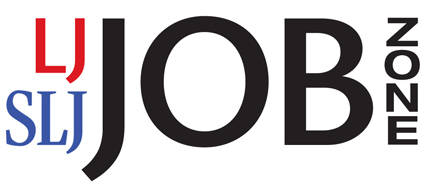Internet Access: FCC Releases 2014 “Measuring Broadband America” Report
From the Federal Communications Commission:
The Federal Communications Commission today released the results of its ongoing nationwide performance study of residential broadband service in its fourth “Measuring Broadband America” report.
This year’s report reveals that most broadband providers continue to improve service performance by delivering actual speeds that meet or exceed advertised speeds during the past year, but some providers showed significant room for improvement, particularly with respect to consistency of speeds.
Highlights
This year’s report highlights five evolving trends:
1. ISPs continue to deliver the combined upload/download speeds they advertise, but a new metric this year – consistency of speeds – shows there’s still work to be done: This year’s report shows that average speeds are close to advertised, but not always available. Cablevision, for example, delivered 100 percent or better of advertised speed to 80 percent of our panelists 80 percent of the time during peak periods, but about half the ISPs delivered about 90 percent or better of advertised speed, and several ISPs delivered less than 60 percent or better of advertised speeds 80 percent of the time to 80 percent of the panelists. This is the first time we have included a metric designed to convey how likely any given consumer is to experience broadband speeds of a particular level or greater. We expect ISPs to improve upon consistency over the course of the next year and we will focus on this issue in the future.
2. Download speeds performance varies by service tier, with some ISPs delivering less than 80 percent of advertised speeds: All ISPs except for one (Qwest, which had a 16 percent performance improvement in download speed) were within 10 percent of last year’s results, i.e. largely unchanged. Overall trends were encouraging. For download speeds, ten of 14 reporting ISPs showed slightly improved download performance, four were virtually unchanged and only one ISP (Verizon offering DSL service) showed results slightly worse than last year. However, Windstream’s 1.5 Mbps speed tier only delivers 78 percent of advertised speeds, a low among all ISPs at all speed tiers.
3. Fiber and Cable technologies continue to evolve to higher speed offerings, but DSL is beginning to lag behind: Additionally, while providers using cable and fiber access technologies generally met or exceeded their advertised tiers, providers using DSL technology generally failed to meet their advertised speeds. This may indicate differences in the economics of upgrading DSL relative to other technologies, and investment choices by broadband providers or the price points at which higher speeds are made available for DSL. For example, DSL can require structural or plant upgrades to achieve higher speeds while cable or fiber can upgrade with incremental investments in the electronics. We fully expect providers to make the necessary investments to ensure that the service they deliver is consistent with what they advertise to consumers.
4. Consumers continue to migrate to higher speed tiers: We continue to see a migration of consumers from lower speed tiers to higher offerings both by consumers electing to purchase higher speeds and through upgrades of standard offerings by Internet service providers. A simple average of service tiers surveyed in 2013 shows an average advertised speed of 21.2 Mbps, representing an increase of approximately 36 percent from 15.6 Mbps in 2012.
5. Upload speeds vary sharply: Many studies have shown that consumer Internet traffic today is asymmetric – consumers typically download far more data than they upload. Consistent with that behavior, most service offerings typically have far higher download than upload rates. With this in mind, we note that one ISP (Verizon) offers upload rates as high as 35 Mbps and one (Frontier) offers upload rates of 25 Mbps, more than twice that of the next ISP. Verizon and Frontier use fiber based services and
have offered these high upload speeds during the course of our program. With the exception of these two service providers, no other provider in the study offers rates that are higher than 10 Mbps.
Network Congestion
The study uncovered network congestion at certain interconnection points during the report’s reporting period. Although that data is not included in the findings of the report, the FCC will make this data fully available with the report for the public to review and analyze. The FCC is also taking steps to better understand the issues that presented themselves, including by analyzing network impact on video service providers such as YouTube, Hulu, and Netflix and others and requesting more information from ISPs and video providers about peering issues. We are working to develop tools that measure and validate how these types of congestion issues affect the consumer experience. We expect to have instituted additionaltesting methodologies providing more information on network congestion and peering by winter 2014.
Direct to Full Text Report (Also Embedded Below)
Download Raw Data
Direct to Graphics (Only)
Direct to Methodology and Previous Reports
2014 Fixed Measuring Broadband America Report
Filed under: Data Files, News, Reports, Video Recordings
About Gary Price
Gary Price (gprice@gmail.com) is a librarian, writer, consultant, and frequent conference speaker based in the Washington D.C. metro area. He earned his MLIS degree from Wayne State University in Detroit. Price has won several awards including the SLA Innovations in Technology Award and Alumnus of the Year from the Wayne St. University Library and Information Science Program. From 2006-2009 he was Director of Online Information Services at Ask.com.


